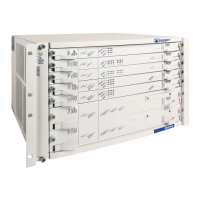JUNOSe 7.2.x Policy Management Configuration Guide
178 ! Optimizing Packet Mirroring Performance
The following list indicates the order of precedence for the subscriber identification
triggers, with the acct-session-id having the highest precedence.
1. acct-session-id
2. calling-station-id
3. ip-address (virtual router specific)
4. nas-port-id
5. username (virtual router specific)
For example, if you create the following three rules for a subscriber, the packet
mirroring session uses the rule with the acct-session-id to identify the subscriber.
When there are multiple rules, if the selected rule fails, the router denies the packet
mirroring request and does not attempt to use the other rules.
host1(config)#mirror acct-session-id atm 2/1.2:0.42:0001048579 ip
secure-policy-list securePolicyIp10
host1(config)#mirror ip-address 192.168.105.25 ip secure-policy-list
securePolicyIp4
host1(config)#mirror username jwbooth@isptheatre.com ip secure-policy-list
securePolicyIp15
If the packet mirroring request is a RADIUS-initiated session (a RADIUS-based
packet mirroring session for a subscriber who is already logged in), the router
verifies the validity of all of the mirroring rules related to the particular subscriber. If
any of the rules fail (for example, the identification fields do not match), the packet
mirroring request is denied.
Optimizing Packet Mirroring Performance
Packet mirroring operations require some system resources. As a general rule, to
avoid performance degradation, limit the amount of mirrored traffic to a maximum
of 5 percent of the E-series router’s total traffic.
For many packet mirroring environments, using the 5-percent guideline is
sufficient. However, if you want to more closely manage packet mirroring’s use of
your router’s resources, this section provides guidelines and equations to help you
determine your packet mirroring requirements.
Assumptions
The guidelines for packet mirroring requirements in this section use the following
assumptions for a specific line module:
A = Total input traffic at the line module
B = Total output traffic at the line module
X = Amount of traffic mirrored at input in the line module
Y = Amount of traffic mirrored at output in the line module

